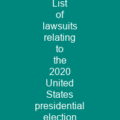Understanding Lawsuits: A Deep Dive into the Legal Process
Lawsuits are a complex yet essential part of our legal system. They serve as a means to resolve disputes, seek justice, and ensure that those who have been wronged can find relief. Have you ever wondered what exactly happens when someone decides to sue another party? Let’s explore the intricate world of lawsuits together.
What Exactly is a Lawsuit?
A lawsuit is essentially a legal battle between two or more parties, where one party (the plaintiff) claims that they have been wronged by the other (the defendant). The plaintiff seeks a remedy through the court system, while the defendant must respond to avoid default judgment. It’s like a high-stakes game of chess, but with real-world consequences.
The Players in a Lawsuit
Let’s meet the key players: plaintiffs, who initiate the lawsuit; defendants, who are accused and must respond; and their respective attorneys. These professionals navigate the legal landscape, ensuring that each party’s rights are protected. Imagine these roles as the captains of two opposing teams in a grand tournament.
The Origins of ‘Lawsuit’
The term “lawsuit” comes from combining law and suit, derived from French and Latin terms meaning to pursue or follow. It’s like a long, winding road that leads to the courtroom. This journey can be complicated, with rules of procedure governing every step.
The Rules of Procedure
These rules arise from statutory law, case law, and constitutional provisions, differing between jurisdictions and courts. It’s like a set of instructions for a complex board game, ensuring that everyone plays by the same rules. These rules are crucial to maintain fairness and order in the legal system.
The Pre-Trial Phase
Before we reach the courtroom, there is a pre-trial phase where both parties exchange information through discovery. This process involves gathering evidence, depositions, and other forms of communication. It’s like preparing for battle by gathering intelligence and resources.
The Complaint or Petition
A complaint or petition is filed with the court, stating the plaintiff’s claims against one or more defendants, along with relevant factual allegations. The plaintiff must select the proper venue and jurisdiction for the lawsuit. This initial step sets the stage for what’s to come.
The Defendant’s Response
Once served, the defendant has a limited time to file an answer or dispute the complaint through motions like demurrers or pre-answer motions. The defendant can also assert counterclaims against the plaintiff, making the legal landscape even more complex.
The Trial and Beyond
At trial, each party presents witnesses and evidence is recorded. After this occurs, the judge or jury renders their decision. The plaintiff has the burden of proof in making claims, but the defendant may have the burden on other issues. This phase is like the final showdown where all the cards are laid out.
The Settlement Process
Most lawsuits end in settlement before reaching trial. About 98% of civil cases in the US are resolved without a trial, with domestic courts often applying foreign law to foreign defendants. This process can be like negotiating a peace treaty, where both sides find common ground.
The Appeal Process
If there was an error made during the trial, an appeal can be filed. The appellate court reviews the decision for errors rather than holding a new trial. This step is crucial to ensure that justice is served and no mistakes are overlooked.
Legal Financing: A New Frontier
In recent years, legal financing has emerged as an innovative solution for litigants who lack financial resources. These companies provide cash advances in exchange for a share of the settlement or award. It’s like having a financial lifeline that can help you navigate the legal system without breaking the bank.
The Future of Lawsuits
As our society evolves, so does the legal landscape. Scholars continue to study why firms choose private dispute resolution or litigation, and how these choices impact outcomes. The future of lawsuits is likely to be shaped by technological advancements and changing societal norms.

In conclusion, lawsuits are a complex yet essential part of our legal system. They serve as a means to resolve disputes and seek justice. By understanding the intricacies of this process, we can better navigate the challenges that may arise in our personal or professional lives.
You want to know more about Lawsuit?
This page is based on the article Lawsuit published in Wikipedia (retrieved on February 17, 2025) and was automatically summarized using artificial intelligence.






